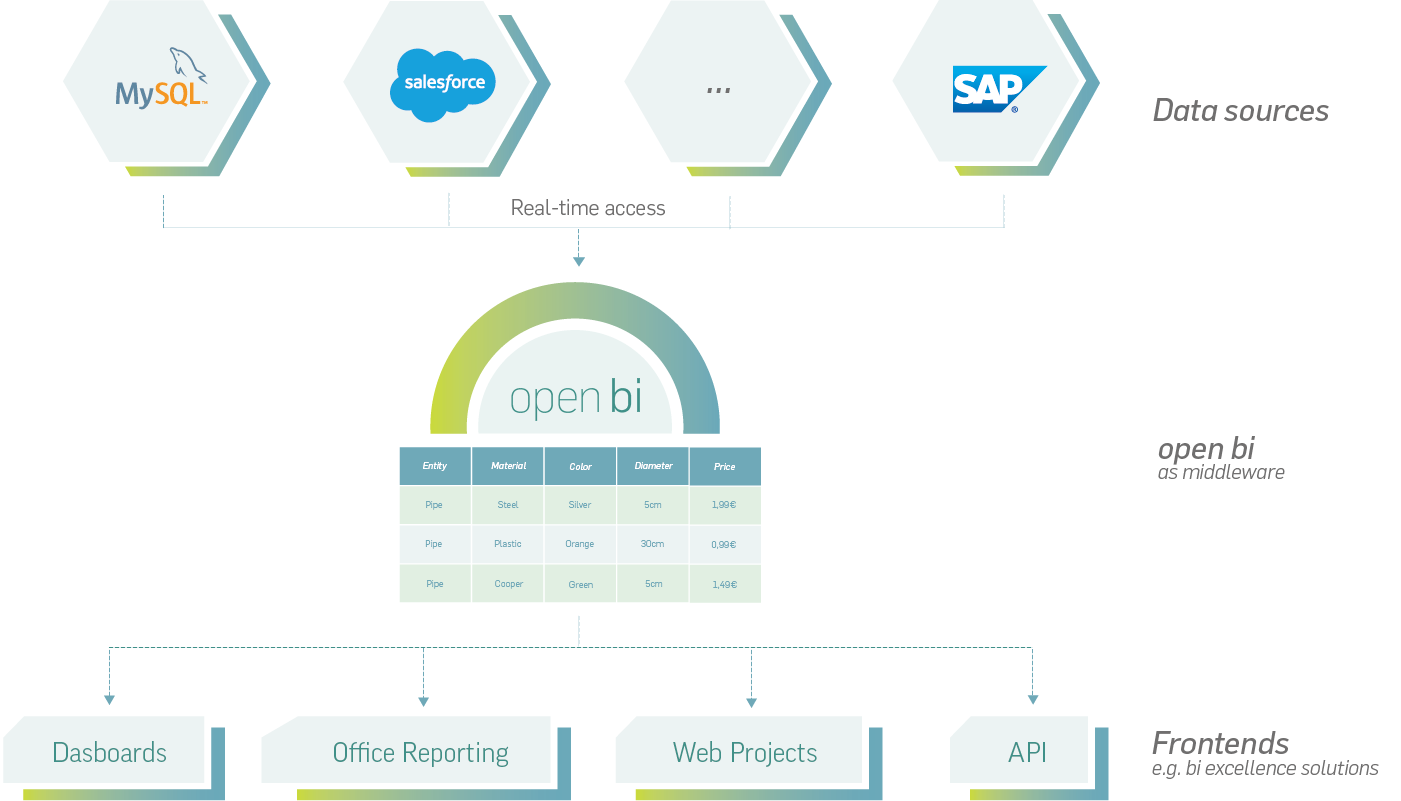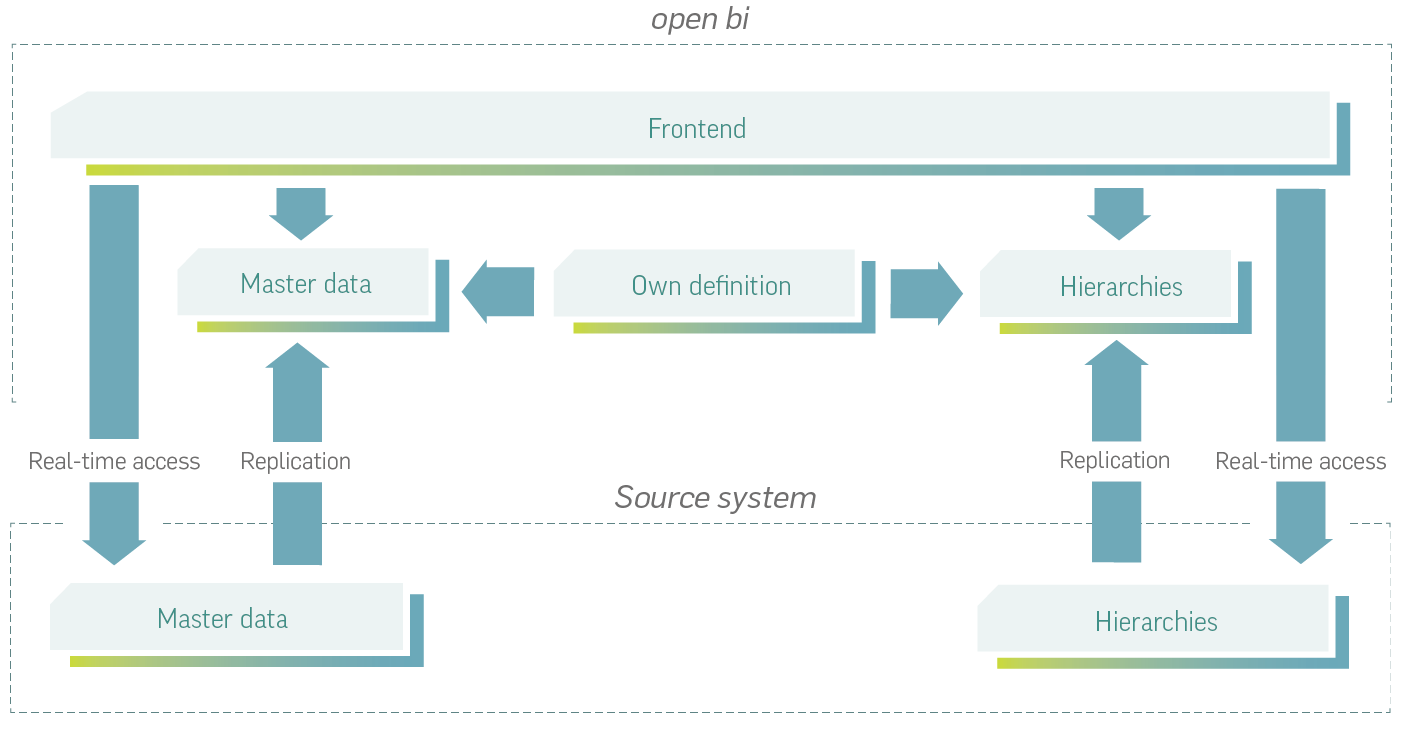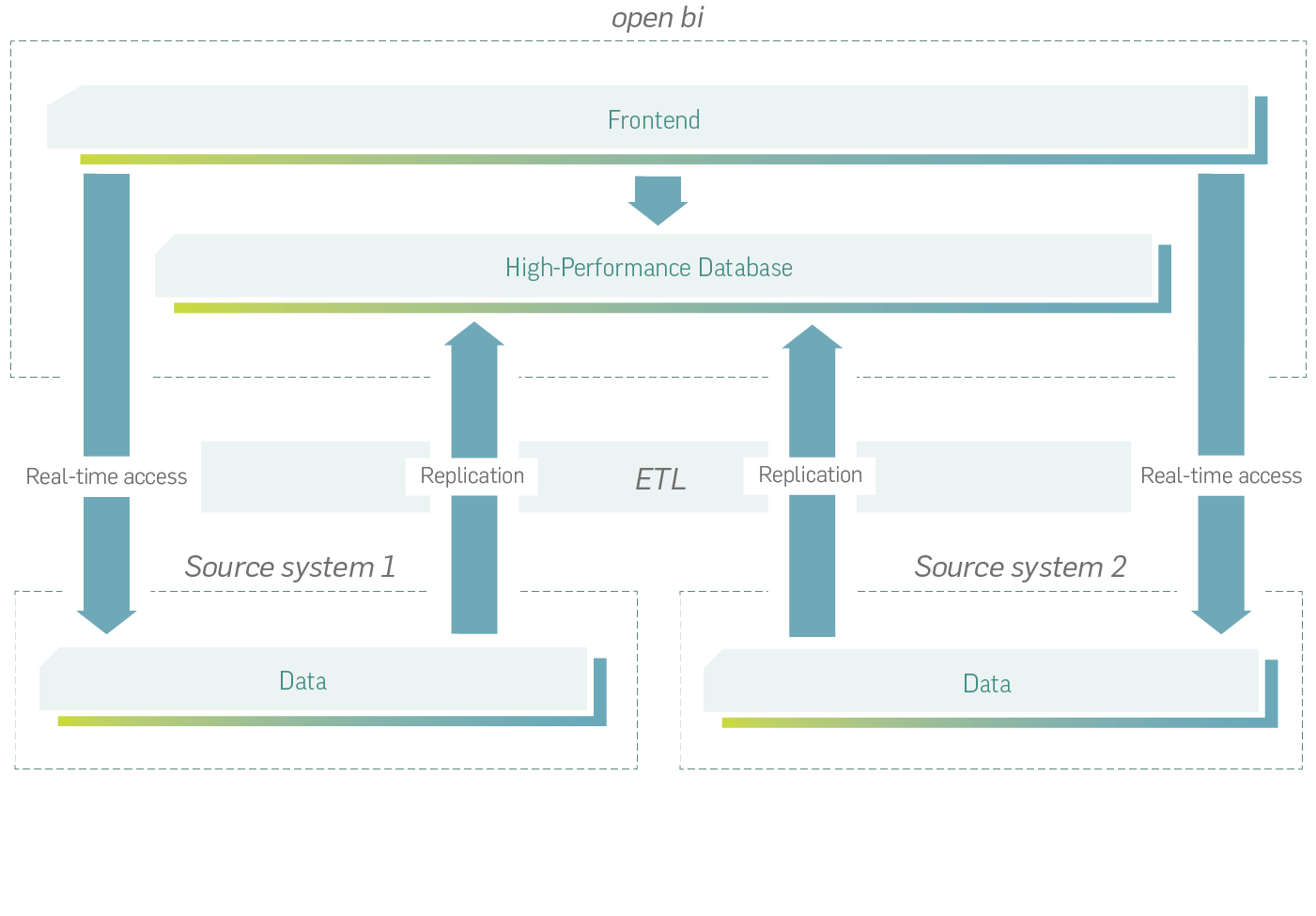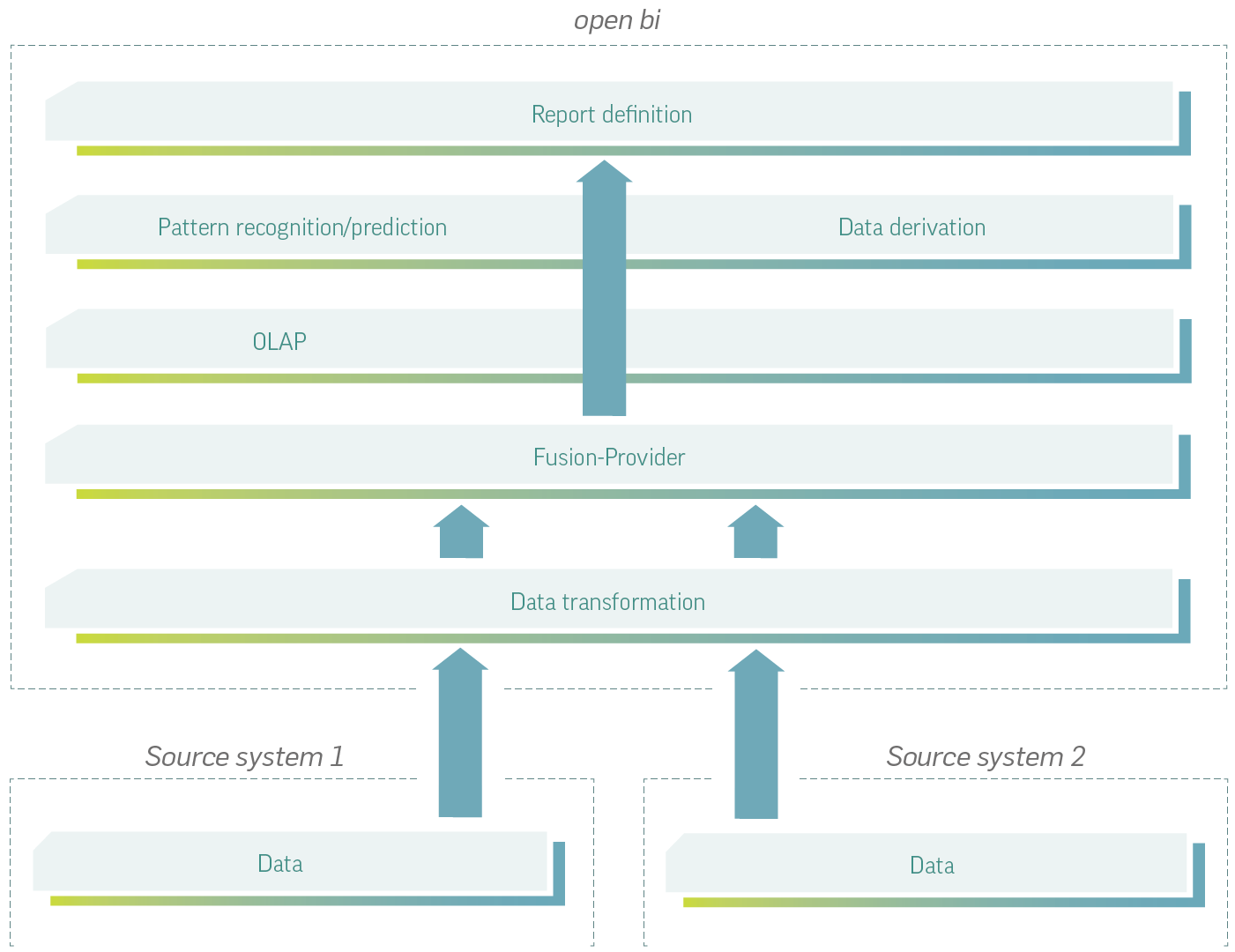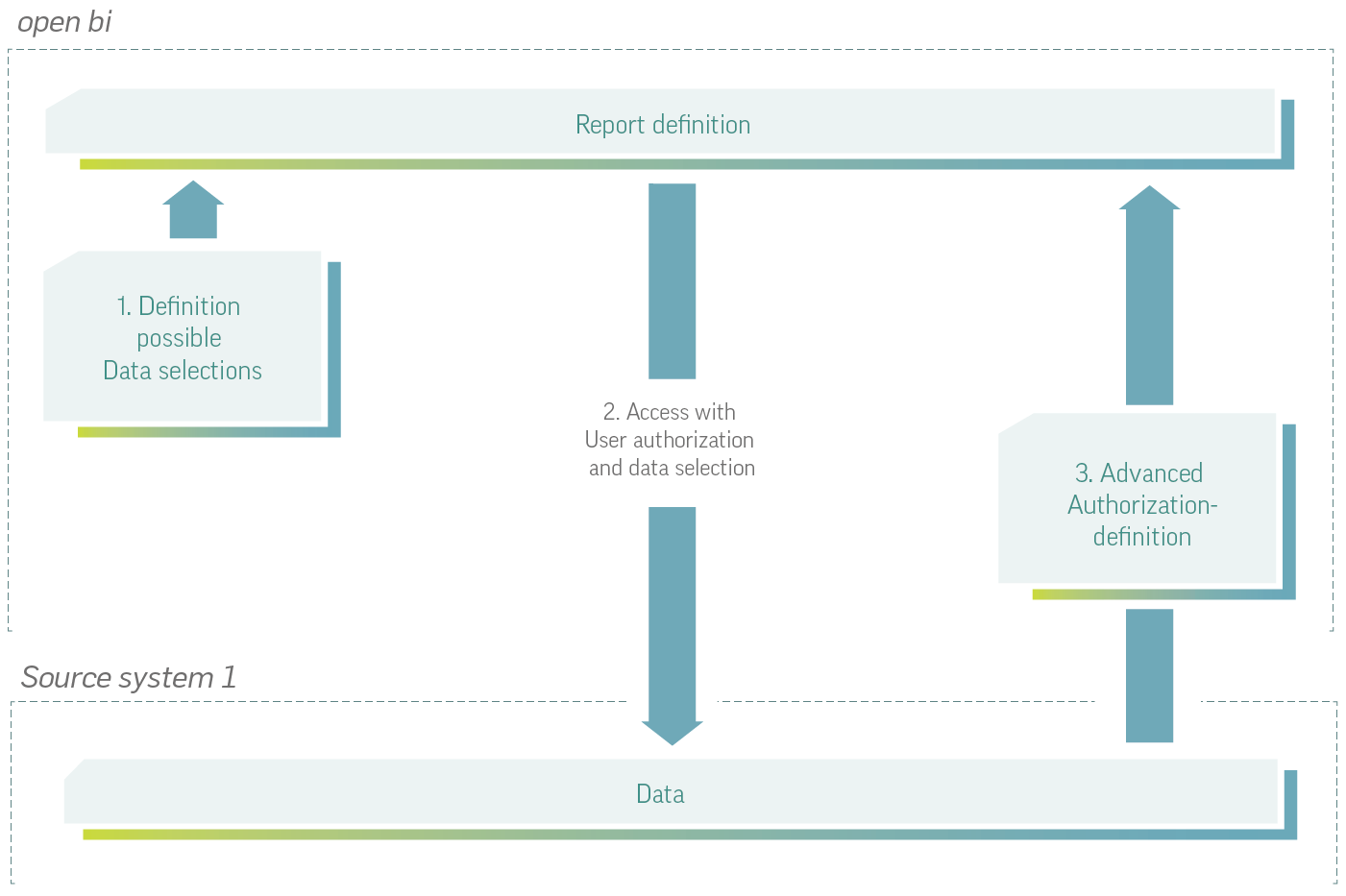In recent years, "business intelligence" and "analytics" have evolved from their niche for corporate controllers through strategic decision-making into operational business. Nowadays, it is almost impossible to make any decision without analytics.
At the same time, analytics is a very complex field: it might come as a simple report on multidimensional business data, as a real-time dashboard, or as Big Data and the analysis of IoT sensor data. In addition, visualisation, processing and forecasting via artificial intelligence are important topics.
The sheer mass of analytical solution providers has not made tool selection any easier in recent years. On the one hand, there are the software giants such as Microsoft, SAP and Google. On the other side, there are visualisation specialists like Tableau or providers for small businesses that want to offer a simple analysis process.
From our many years of experience, we at bi excellence software GmbH can say that it is precisely this area of tension that poses a great challenge for medium-sized companies: For them, the large software packages are often too complicated and associated with too high costs - on the other hand, they also do not have simple analysis processes, but very explicit and complex requirements for the analyses.
